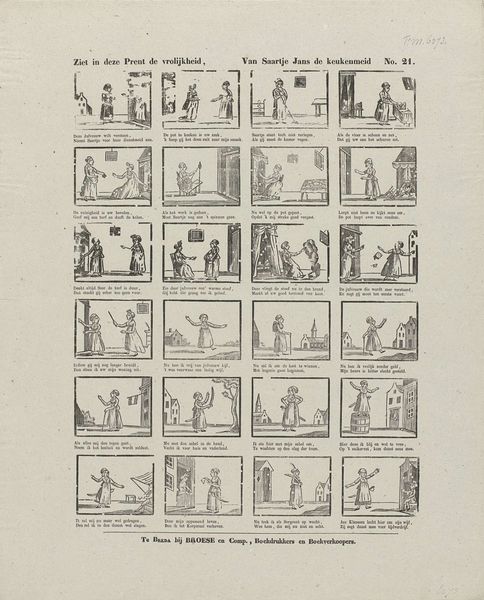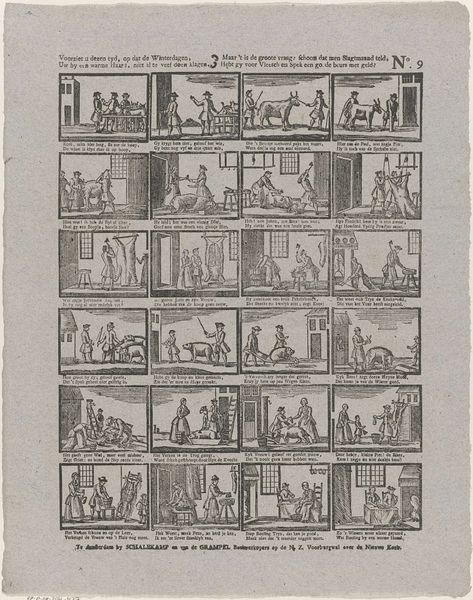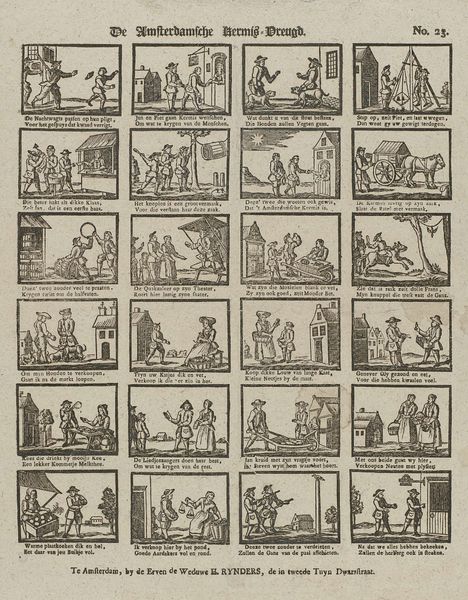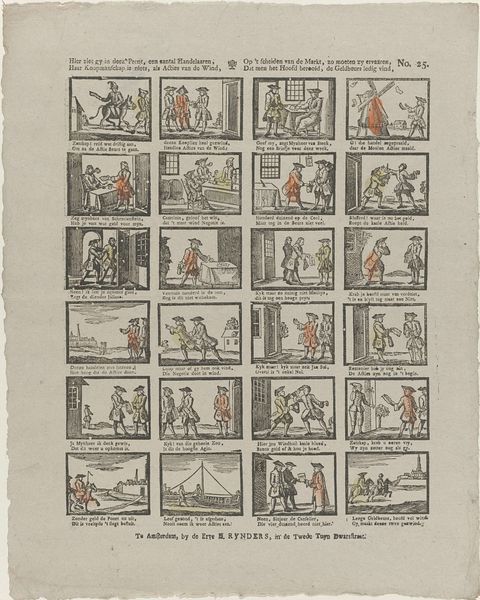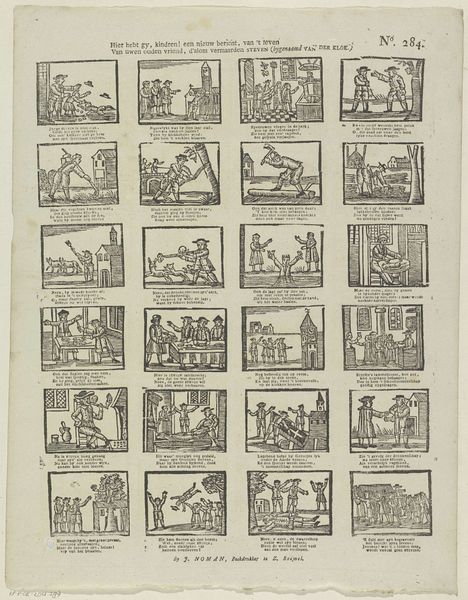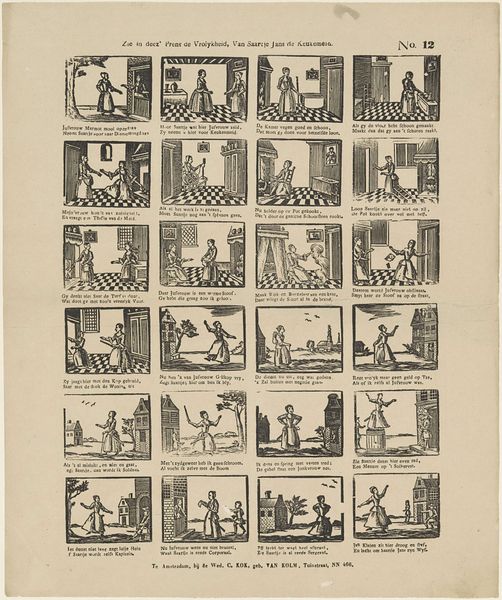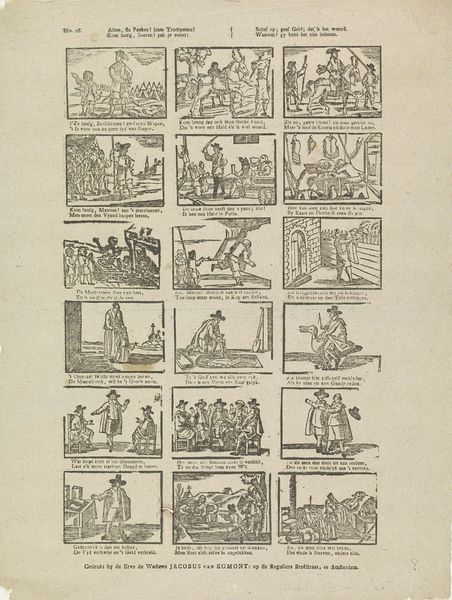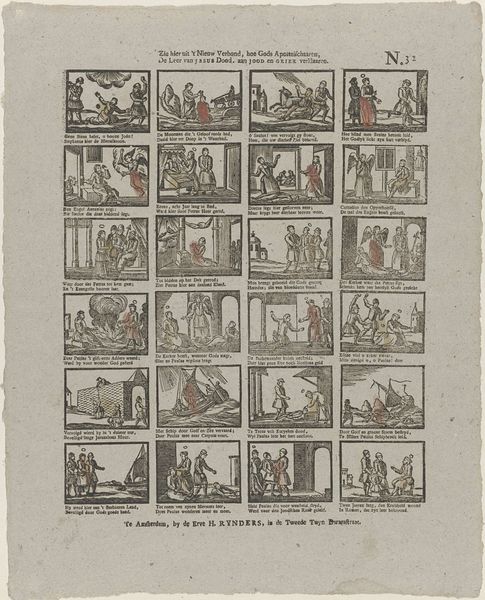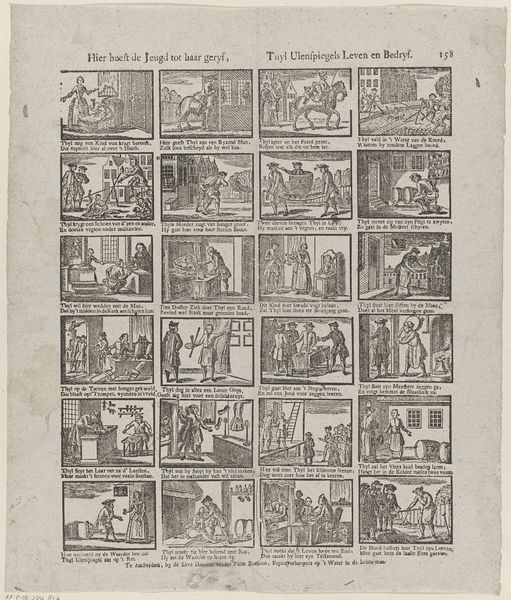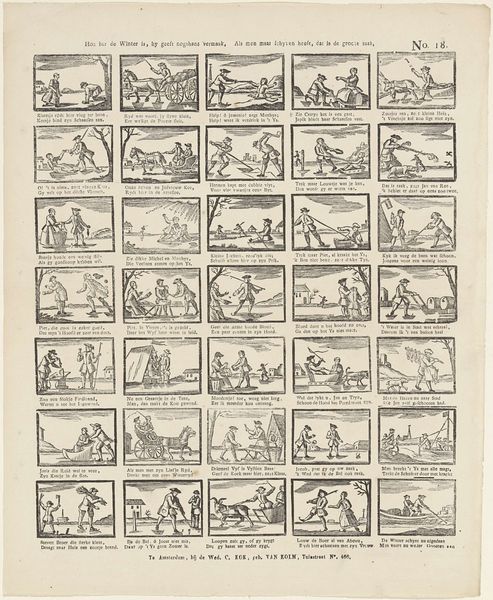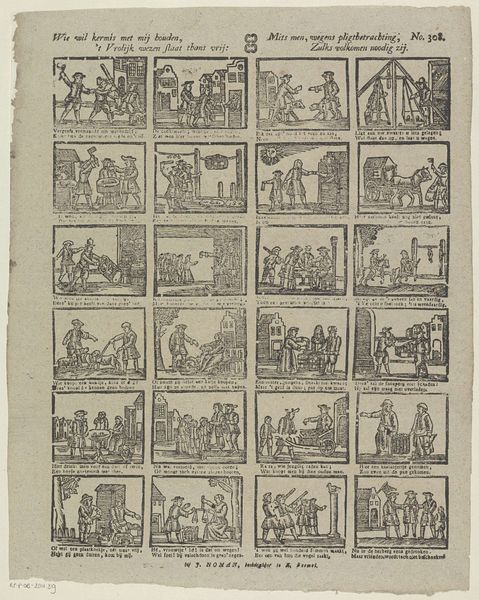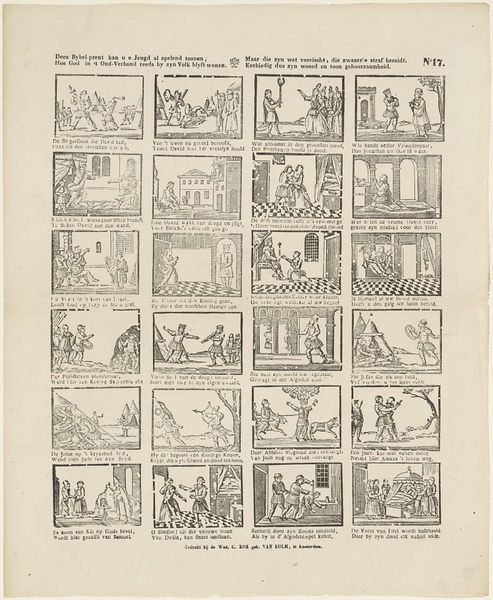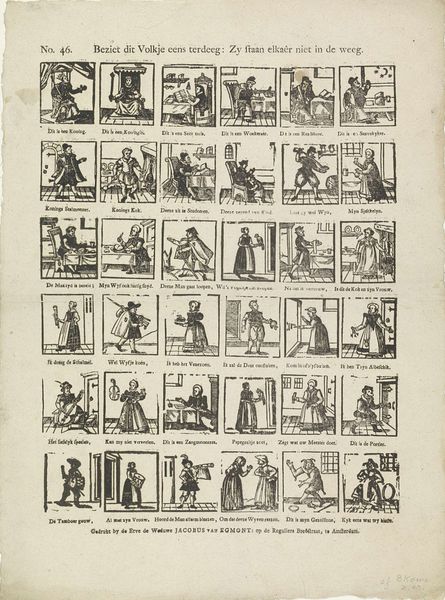
Hoe gy het spelen mint, vergeet het leeren niet, / Waar van ge in d' Ouderdom, de schoonste vruchten ziet 1842 - 1866
0:00
0:00
print, etching, engraving
#
comic strip sketch
#
narrative-art
#
mechanical pen drawing
# print
#
pen illustration
#
etching
#
pen-ink sketch
#
comic
#
pen work
#
sketchbook drawing
#
genre-painting
#
storyboard and sketchbook work
#
engraving
Dimensions: height 402 mm, width 328 mm
Copyright: Rijks Museum: Open Domain
Curator: This piece, "Hoe gy het spelen mint, vergeet het leeren niet," from between 1842 and 1866, strikes me as incredibly detailed for an engraving. The artist, Weduwe C. Kok-van Kolm, has packed so many little scenes onto a single print. What are your initial thoughts? Editor: I'm immediately drawn to the almost comic strip style layout. The figures and stories have this folksy feeling to them, with a clear narrative quality across the print. How does that format influence how we interpret the piece? Curator: Precisely. I think the choice of printmaking itself, specifically engraving and etching, speaks volumes. These were methods of mass production, aimed at a broad audience. So we need to think about this work within the context of accessible storytelling. Was it a way to disseminate moral lessons widely and cheaply? Was the artist responding to market demands for these accessible narratives? Editor: So you’re suggesting the very *making* of it reflects a desire for broader reach, to move beyond elite art audiences? Curator: Absolutely. Think about the labor involved, too. Each line etched, each plate printed, represents someone’s time and effort contributing to the final piece. The “low art” status of printed material versus painting has hidden the importance of the processes by which knowledge, morals, or ideas of leisure activities are communicated at the moment. And does the textual element change the piece’s dynamic? Editor: I see what you mean! It really highlights the craftsmanship often overlooked in "lower" art forms. Curator: Exactly. Looking at the combination of images and text gives context to not only artistic intent, but also who had access to educational leisure in the mid 19th century. It reframes the discourse on art. Editor: That's fascinating! It makes me appreciate how much the materials and production methods shape our understanding of even seemingly simple artwork. Curator: And by recognizing those often-overlooked aspects, we get a much richer understanding.
Comments
No comments
Be the first to comment and join the conversation on the ultimate creative platform.
